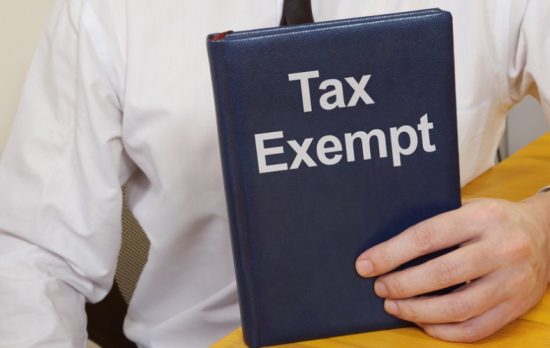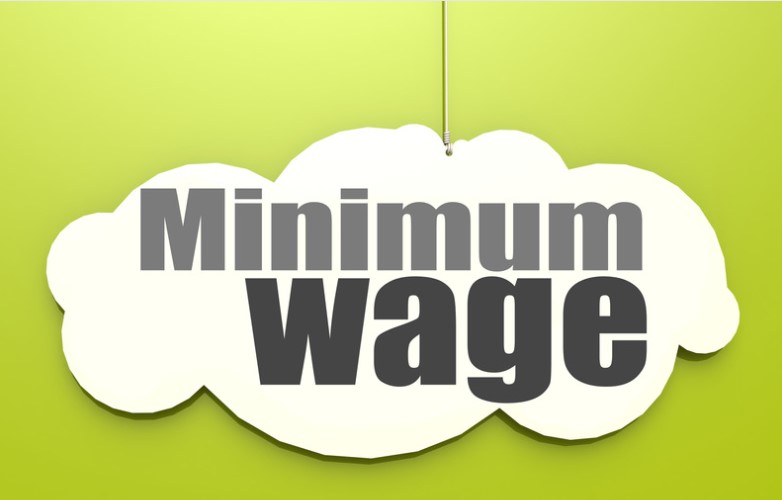Are you planning on selling or buying a vehicle in Ontario? If so, understanding the process of transferring ownership is crucial. Navigating the paperwork and legal requirements can be overwhelming, but don’t worry! In this article, we will guide you on how to transfer vehicle ownership in Ontario. From necessary documents to tax exemptions, we’ve got you covered.
How to Transfer Vehicle Ownership in Ontario?

To transfer ownership of a vehicle in Ontario, you must have the necessary documents and follow specific procedures. The seller must provide a signed Used Vehicle Information Package (UVIP), which includes important details about the car’s history, such as any accidents or liens. The purchaser needs to complete and sign an Application for Transfer form and pay the mandatory registration fee.
The transfer process can be done online through ServiceOntario’s website or in person at a ServiceOntario center. If you choose the online option, both parties will need to create an account on ServiceOntario and follow the instructions accordingly.
After completing all requirements successfully, new license plates are issued to the buyer if they do not already possess them. If using old plates, proof of insurance is required before transferring them. It may take up to six weeks for your transfer request to be processed by the Ministry of Transportation (MTO). However, once completed successfully, you’ll receive documentation that confirms ownership has been transferred legally!
What Documents Required to Change Ownership?
When buying or selling a vehicle in Ontario, it’s important to understand what documents are required for a smooth transfer of ownership. The following are the necessary documents needed to complete the process:
- Firstly, you will need the vehicle’s original registration permit. This document contains critical information about your car, such as its make and model, year of manufacture, VIN (Vehicle Identification Number), and license plate number.
- Secondly, you will need a bill of sale from the seller with their name and address on it. Make sure that all details on the bill of sale match those on the registration permit.
- Thirdly, if there is an outstanding loan balance on your vehicle purchase, then ensure that form UVIP (Used Vehicle Information Package) is available with all details regarding any liens or encumbrances against your new car.
- Fourthly, you must present proof of insurance for your new car before transferring ownership.
- Finally, a government-issued photo ID such as a driver’s licence or passport is essential to verify identity during vehicle transactions.
Having all these documents ready when starting the transfer process is crucial so that everything goes smoothly without any hiccups along the way.
Selling a Vehicle
Selling a vehicle in Ontario requires following certain procedures and providing specific documents. Firstly, you need to have ownership of the vehicle, and it should be free from any liens or loans. If there are any outstanding fines on the vehicle, they must be paid before selling it.
Next, you need to get a Used Vehicle Information Package (UVIP) from ServiceOntario. The UVIP contains all important information about the vehicle, such as its history, accidents, and previous owners.
Once you have found a buyer for your car, both parties will need to sign a Bill of Sale, which includes details such as the sale price and date of transfer. It is also advisable to provide a receipt for payment made by the buyer.
After completing these steps, you can then transfer ownership at ServiceOntario within six days of selling the car. This process involves providing necessary documents, such as a bill of sale, a UVIP package, and signed application forms for registration and vehicle insurance.
By following these guidelines when selling your vehicle in Ontario, you can ensure that everything goes smoothly while transferring ownership.
Buying a Vehicle

Buying a vehicle can be an exciting experience, but ensuring you have all the necessary documentation and information before purchasing is important.
- Firstly, make sure you are buying from someone legally able to sell the vehicle. It’s also crucial to obtain a Used Vehicle Information Package (UVIP) which provides details about the history of the car.
- When inspecting the car, take note of any damages or issues with its condition. Consider taking it for a test drive as well. Once you’ve decided to purchase the vehicle, make sure to obtain proof of ownership from the seller and complete a bill of sale.
- When transferring ownership at ServiceOntario, bring all relevant documents, including proof of insurance and driver’s license. You will also need to pay for applicable fees, such as registration and licensing costs.
- Buying a vehicle requires attention to detail and careful consideration to ensure that both parties are protected throughout the transaction process.
Transfer of Ownership Process
Ontario’s transfer of ownership process is a crucial step that must be completed when buying or selling a vehicle. It involves the legal transfer of ownership from one person to another and requires specific documents to be provided.
To begin, both parties involved in the transfer must complete the necessary paperwork. This includes completing and signing an Application for Transfer along with providing proof of insurance.
Once this has been done, the seller should remove their license plates and registration sticker from the vehicle while also keeping their portion of the Vehicle Registration Document (VRD). The buyer then takes possession of the vehicle and its remaining documentation.
It’s important for both parties to notify ServiceOntario about the completed transaction within six days. Penalties or fines may apply if this is not done.
While it may seem like a daunting task, following these steps will ensure a smooth transfer of ownership process that is legally binding and properly documented for all parties involved.
Transfer of License Plates
The transfer of license plates is an important step in the process of transferring vehicle ownership in Ontario. This allows the new owner to keep the same license plate number and avoid purchasing new ones.
To transfer your license plates, you must first remove them from your current vehicle by visiting a ServiceOntario location and completing a plate surrender form. You will then be issued a plate ownership certificate to give to the new owner.
The new owner will need this certificate, along with their proof of insurance and registration, when they visit a ServiceOntario location to complete the transfer of ownership process. They will also need to pay any applicable fees during this visit.
It’s important to note that personalized or specialty plates cannot be transferred between individuals. These types of plates are registered specifically to one person and cannot be transferred without cancelling and reapplying for a new personalized or specialty plate.
By following these steps, you can successfully transfer your license plates and ensure a smoother transition of ownership for both parties involved.
Transferring Out of Province Vehicles
Transferring out-of-province vehicles can be a bit more complicated than transferring ownership within Ontario. In order to transfer an out-of-province vehicle, the owner must provide proof of ownership and registration from their previous jurisdiction.
The first step is to obtain a Safety Standards Certificate (SSC) from an approved inspection station in Ontario. This will ensure that the vehicle meets safety standards and can be registered in this province.
Once the SSC has been obtained, the owner must bring it along with their existing registration and proof of insurance for the vehicle to a ServiceOntario location. They will also need to provide identification, such as a driver’s license or passport.
If there is any outstanding financing on the vehicle, it is important to contact the lienholder before attempting to transfer ownership. The lienholder may have specific requirements or documentation needed for the transfer process.
It’s worth noting that some provinces require emissions testing prior to transferring an out-of-province vehicle. If your previous jurisdiction requires this, you will need to provide proof of compliance before registering your car in Ontario.
While transferring an out-of-province vehicle may seem daunting at first, following these steps should help make things go smoothly and get you on your way with your newly acquired ride!
Dealing With Loans and Liens

When it comes to transferring ownership of a vehicle that still has an outstanding loan, there are some extra steps involved in the process. First and foremost, contacting your lender and informing them of your intention to transfer ownership is important.
The lender will likely require you to pay off the remaining balance on the loan before allowing you to transfer ownership. This means you’ll need to work out a payment plan or find other sources of financing if needed.
Once the loan is paid off, you can proceed with transferring ownership as usual by completing all necessary paperwork and submitting it to ServiceOntario. Keep in mind that this process may take longer than normal due to the additional steps involved.
It’s also worth noting that if you’re buying a vehicle with an outstanding loan, you’ll want to ensure that the seller pays off their debt before transferring ownership. Otherwise, you could end up responsible for paying off their remaining balance yourself.
Dealing with loans when transferring vehicle ownership can be a bit more complicated but manageable with proper communication and planning.
How to Transfer Ownership to a Family Member?
Transferring ownership to a family member in Ontario is relatively straightforward. The process is similar to transferring ownership when selling a car, but some important differences exist.
First and foremost, the seller must have proof of ownership and provide it to the buyer (the family member). This can be done by showing the vehicle’s registration certificate or bill of sale. If the current owner has lost these documents, they will need to apply for duplicates before proceeding with the transfer.
Next, both parties must complete and sign an Application for Transfer form (available online or at ServiceOntario locations). The buyer must also show identification that proves their name and address.
Once all necessary documentation is gathered, the new owner needs to visit a ServiceOntario location within six days of completing the transaction. They will also need to pay any applicable fees and taxes at this time.
Transferring ownership within a family should be relatively easy as long as both parties have all required documentation ready beforehand.
How to Transfer Ownership When Selling a Car?
Selling a vehicle can be an exciting but overwhelming experience. Knowing the steps required to transfer ownership when selling a car in Ontario is important.
First, ensure that you have all the necessary documents, such as the vehicle registration, insurance certificate and safety standards certificate. You will also need a signed bill of sale from both parties involved in the transaction.
Next, visit your nearest ServiceOntario location with all the required documentation to complete the transfer of ownership process. The buyer must provide identification and payment for any fees associated with transferring ownership.
It is crucial that both parties sign off on the back of the vehicle registration permit and keep their respective copies for future reference. This document acts as proof of ownership transfer and protects both parties from potential legal issues down the road.
Remember to cancel your insurance policy once you have completed the transfer process. Failure to do so could result in paying for unnecessary coverage expenses.
By following these simple steps, you can successfully transfer ownership when selling a car in Ontario without any hassle or confusion.
How to Transfer Vehicle Ownership After Death?
Losing a loved one is never easy, and dealing with the transfer of their vehicle ownership can add another layer of complexity. If the deceased owned a vehicle in Ontario, knowing how to properly transfer ownership is important.
Firstly, you will need to obtain a copy of the death certificate. This document is required for any legal transactions related to the estate. Once you have this, you will need to fill out an Application for Transfer form and provide proof that the deceased person owned the vehicle.
If more than one surviving spouse or executor is listed on the will, all parties must sign off on transferring ownership. Additionally, if there are any outstanding liens or loans on the vehicle, those debts must be settled before the transfer can occur.
It’s also worth noting that there may be tax implications when transferring ownership after death. Consult with an accountant or lawyer who specializes in estate planning to ensure compliance with relevant tax laws.
Transferring vehicle ownership after death requires careful attention and adherence to legal procedures. Don’t hesitate to seek professional assistance if needed during this process.
Tax Exemption on Vehicle Transfer

When it comes to transferring vehicle ownership in Ontario, there are certain tax exemptions that you should be aware of. These exemptions apply to specific situations, such as transfers between family members or spouses and transfers due to the death of the owner.
If you’re transferring a vehicle to a family member or spouse, you may be eligible for a tax exemption. Both parties must complete an affidavit confirming their relationship and sign the appropriate sections on the transfer application form to qualify for this exemption.
In cases where a vehicle is transferred due to the owner’s death, a tax exemption is also available. The executor or administrator of the estate can claim this exemption by providing proof of their authority and completing the necessary forms.
It’s important to note that any outstanding fines or fees associated with the transferred vehicle will still need to be paid in full before completing the transfer process.
Understanding these tax exemptions can help make your vehicle ownership transfer process smoother while saving you money along the way.
Conclusion
After going through the transfer of vehicle ownership process in Ontario, it is clear that there are many rules and regulations to follow. It can be overwhelming for some individuals, but it can be a smooth process with proper guidance and documentation.
One important thing to remember is that the documents required may vary depending on the situation. For example, transferring ownership after death requires different paperwork than selling a vehicle or transferring plates. It is also crucial to note that dealing with loans during the transfer process can be complex. It’s best to contact your lender beforehand to ensure all necessary steps are taken care of.
When it comes to transferring vehicle ownership in Ontario, being organized and informed will make a significant difference in completing the process successfully.
FAQ – How to Transfer Vehicle Ownership in Ontario?
1. Can you transfer car ownership online in Ontario?
Yes, you can transfer car ownership online in Ontario. The Ontario Ministry of Transportation (MTO) offers an online service called ServiceOntario that allows vehicle owners to transfer their vehicle ownership electronically.
To use this service, both the buyer and seller must have an email address and access to a printer to print out the temporary registration permit. Additionally, both parties must agree on the purchase price before initiating the online transfer process. Once all necessary information is provided and payment is made, a temporary registration permit will be issued that allows for legal driving until the new ownership documents are received by mail.
Not all transactions can be completed online, such as transferring out-of-province vehicles or those with liens, which is important to note. In these cases, visiting a ServiceOntario location in person may still be necessary. Using the electronic transfer option through ServiceOntario can save time and hassle when transferring ownership of your vehicle in Ontario.
2. What is needed to change ownership of a car in Ontario?
To change ownership of a car in Ontario, several documents are required. The current owner must have a valid driver’s license or government-issued photo ID. Secondly, they need to provide the vehicle’s original registration certificate with all necessary information filled out.
If there is an outstanding lien on the vehicle due to unpaid loans or fines, it needs to be satisfied before transferring ownership. In such cases, it can be helpful for both parties involved if there is documentation that proves a financial settlement has been made.
Buyers will also require proof of insurance before the transfer of ownership. As per legal requirements in Ontario, buyers should hold liability and accident benefits coverage from any licensed automobile insurance provider within Ontario.
Moreover, when purchasing a used car in Ontario, one must complete a Used Vehicle Information Package (UVIP), which confirms that you know the history of the vehicle being purchased and its condition.
Sellers should always remove their personal information from onboard systems like GPS Navigation and infotainment system memory before handing keys to new owners.
3. Do you need insurance to transfer ownership to Ontario?
When it comes to transferring vehicle ownership in Ontario, many people wonder if they need insurance. The short answer is yes, you do need insurance to transfer ownership of a vehicle in Ontario.
However, the type of insurance required depends on the situation. If you are selling your car privately or trading it in at a dealership, you will need to have valid auto insurance for the vehicle until the transfer of ownership is complete.
If you are buying a used car from someone else, it’s important to make sure that their auto insurance policy is still active and covers the vehicle until you can transfer ownership and get your own coverage.
In addition, if you plan on registering the car with the Ministry of Transportation (MTO), proof of insurance must be provided before they will issue license plates and registration documents.
Proper auto insurance coverage is essential to any vehicle transaction in Ontario. It protects both parties involved and ensures that everything goes smoothly during the transfer process.
4. How much is ownership transfer in Ontario?
The cost of transferring ownership in Ontario depends on several factors. The fee for transferring vehicle ownership is $32, regardless of the type of vehicle you’re transferring. However, additional fees may apply if there’s a lien on the car or if it requires an inspection.
5. How long does it take to register a car in Ontario?
Transferring vehicle ownership in Ontario requires specific documents and following a process that varies depending on the situation. When selling or buying a car, it’s essential to ensure all necessary steps are taken to avoid any issues with the transfer of ownership.
After completing the transfer of ownership, registering your new car is the final step. The time frame for registering a car in Ontario can vary based on factors like location and whether you have all the required documents. However, most people receive their registration within two weeks.
Transferring vehicle ownership may seem daunting at first glance, but following these guidelines will make the process much smoother. Don’t forget to seek assistance from experts if needed. Proper planning and attention to detail allow you to transfer vehicle ownership in Ontario without hiccups successfully!











